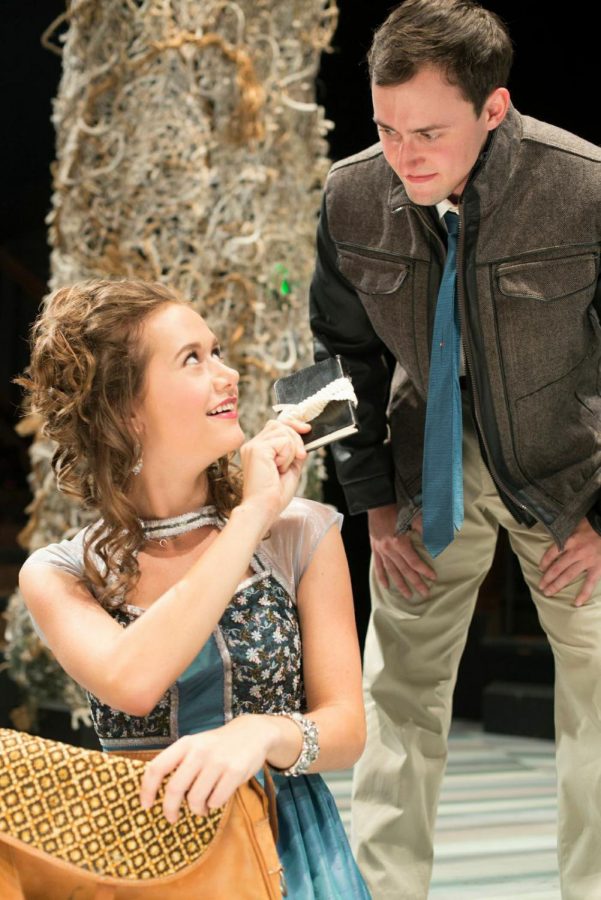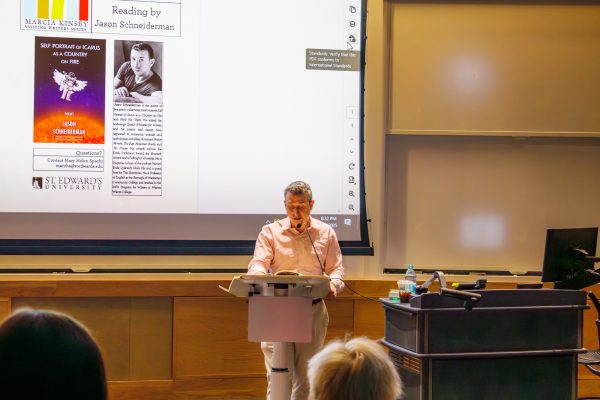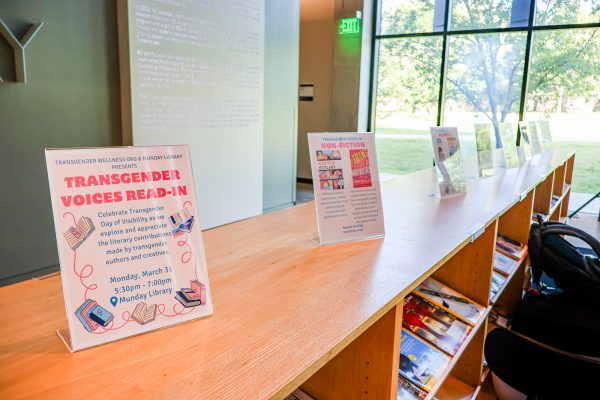Students, professional actors lend fresh take on ‘Hamlet’
This script requires a great deal of talent from all the actors — taking on Shakespeare is no easy task.
“To be, or not to be? That is the question.” In this play’s case: to watch, or not to watch? What is the answer?
The Mary Moody Northen Theatre’s production of William Shakespeare’s “Hamlet” is a must-see this production season.
Directed by Michelle Polgar, the three-hour-long play runs from Nov. 13 to Nov. 23.
The theatre department brought in three guest Equity actors to play the larger roles: Kenneth Wayne Bradley as Claudius, Meredith McCall as Gertrude and David Stahl as Polonius.
The remainder of the cast consists of St. Edward’s undergraduate students, a few of which are making their Mary Moody Northen Theatre debut.
This script requires a great deal of talent from all the actors — taking on Shakespeare is no easy task. Despite the daunting script, the Equity actors and their undergraduate co-stars all expertly delivered their lines with minimal flaws.
Although all three Equity actors dutifully and exceptionally portrayed every ounce of passion, hate and fear that their characters’ possess, it was St. Edward’s own Seth Stewart, junior, who stole the show with his brilliant portrayal of the unraveling Hamlet.
Stewart’s fine-tuned performance more than adequately captures Hamlet’s madness following his father’s untimely death and his mother’s subsequent remarriage to his uncle.
Nothing, not even the beauty of his love interest Ophelia, portrayed by Junior Cheyenne Barton, can distract him from seeking revenge on his father’s murderer.
The usually dutiful and obedient Ophelia was depicted as headstrong and impetuous and unwilling to put up with Hamlet’s hollow advances.Though her character unravels after the death of her father, Barton’s talent never falls short, and her characterization of Ophelia was novel and thoroughly refreshing.
Susan Branch Towne designed costumes that perfectly complemented the actors wearing them. Gertrude’s gowns were elegant and striking–perfectly fit for a queen.
The set design, constructed by Lisa Laratta, was minimal enough not to detract from the polished and professional acting, direction and costume design.
Centered on the stage was what first appeared to be a single, circular staircase but later proved to be a set staircases of differing height that stage crew members periodically divided and rotated around the stage, transitioning between different acts and scenes.
The staircases, much like the characters in the play, are always changing and are not always what they initially appear to be. The crew members moved as quickly and efficiently as possible, allowing the minor interruptions to not cheapen the fluidity of the play.
This production of “Hamlet” pays proper tribute to Shakespeare’s lyrical prose, while bringing in fresh and enjoyable interpretations, sets and pure talent.
Follow Samantha on Twitter @samanthdriscoll







